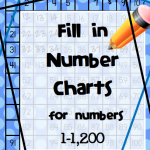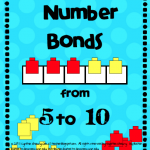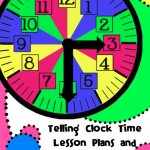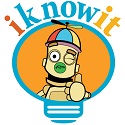Save Time Teaching Time! (and two freebies!)
I have to share what I have been working on with you all! I have been working at home on this for months. I finally finished my Telling Clock Time Lesson Plans and Activities Unit! I’ve been putting together all of the lessons I have used to teach time that have been tried by the fire of struggling learners. I will have to say by far it is the best thing I have posted on Teachers Pay Teachers yet! This is definitely the product for you if you are busy and teaching 2nd or 3rd graders about time.
Many of the lessons have links to videos or book suggestions…
There are 3 differentiated levels of small time booklets for students to fill out. There are lots of other differentiated lessons, too!
To teach elapsed time, there are directions for building a linear clock. You can read more about the linear clock here.

There are card sorts, games, and center activities. This card sort is a freebie!
There are suggestions of ways to teach that will help steer students away from misconceptions about clock time.
And there are clock labels for your classroom clock…
And so much more!
And that’s not even all that’s included!
You can find out more about the time unit here.
I am putting this unit on sale for two days–Monday, November 11th through Tuesday, November 12th–at half price…so scoop it up while the sale lasts!
You Can Use This Cute Bulletin Board Idea to Recognize Achieving Students
Every year we recognize students who scored proficient or above on our state test. We think of a theme and build a wall around it. Our principal usually is the one who decides on a phrase for the year. This year she coined the phrase “Ignite and Inspire (our school’s name) is on Fire”. I really can’t take credit for all the decoration because several people were involved in the whole project.
If you have been following my blog for long you will remember our Olympic themed bulletin board from last year…well we put all that yellow, orange, and red cellophane to good use again for this year! Oh, and the Christmas lights that we made the fire out of…yep, we used them again too, but in the rocket flame this time…see….
Then to recognize all of our kids, we took their pictures and placed them on little fireballs.
We got the glitter scrapbook paper at Hobby Lobby and our whole staff helped cut most of them. One of our teachers freehanded the stencil for the fireball. (how talented!)
Here is an up close view of a fireball…this one turned out lopsided. I’m not sure why I chose to take a close up of it????
Finally the hallway view…
How Can You Use Real Life to Teach Estimation?
Since some of our students are struggling with estimation, I’m thinking of bringing in a few pictures, that might help put estimation in perspective. While out today at the grocery store, I came across estimation.
The sign said, “About 15 items.”
Oh, my gosh! What does that mean? I have 21 items in my cart! Can I still go through the line? The cashier looks haggardly and tired. Is 15 about 20? Is 21 about 20?
I think I will be okay going through the line with 21 items and without a fuss :). Smooth sailing!
Then I found estimation again on a can of almonds.
The can displayed, “About 28 nuts.”
I’m on a diet. Does that mean I can have 45 for the same calories? No, I don’t think so. I think that 45 is close to 50. I know that 25 doubled would be about 50 and 28 is close to 25. What about 30? Would 30 be about 28? Yes, 28 is only 2 away from 30. I think I could have about 30 nuts for the same amount of calories!
I’m on a diet to teach estimation!
Having conversations like this reasoning about numbers will be my plan for this week!
3 Ways to Check a Subtraction Problem
Here are 3 ways we are teaching the kids to check their subtraction problems. First, they start out checking it with estimation to see if their answer is reasonable. Next, they can check their regrouping if it is a regrouping problem by adding their regrouping numbers back together to make sure it equals up to the minuend (the top number in a subtraction problem). Finally they can check their accuracy by using the inverse operation of addition and subtraction. They can add the difference to the subtrahend (the number on the bottom of the problem). I remember this because of a sub-marine is on the bottom like a subtrahend. Sub means under. See the ways kids can check this below. Hmmmm…could be a great anchor chart!! 🙂
Use These in Your Classroom for Addition Fact Fluency
I have to share two great videos one of our teachers found for teaching doubles math facts. She also inspired me to find a video for bonds of ten. This year our district opened up the You Tube site for us to use. Previously You Tube had been blocked. The kids absolutely L-O-V-E the doubles videos! They are great if kids are restless or need a moment to move since they have a fun beat. See for yourself!
Now, in my head when I’m going home, I’m singing, “Doubles, Doubles I can Add Doubles.”
Have You Tried This Simple Idea to Ensure Serious Test Takers?
So often I see students blow off a test, rush through it, make careless errors, and become too lazy to show their work. Because of this, I have to share what this 5th grade teacher did whenever her students did horribly on a test. Many of the grades were failing. Now regardless of whether the grades were failing or not, she will have them do this–student test reflections. I love how she is holding the students accountable for their work by reflecting their test performance. Just take a look below at their writing prompt. (I am sharing this with her permission.)
Have You Taught Multi Digit Even and Odd Numbers Like This?
I thought I KNEW how to teach even and odd numbers until I saw this! Knowing that our third graders always miss the simple skill of even and odd numbers with two and three digits, I thought I would target this misconception. I told them that even numbers have partners and odd numbers have a lonely someone left out. To teach even and odd numbers,I asked if several small numbers like 4, 5, 6, 7, 8 were even or odd and drew pictures of counters to ask if they had a partner. With this idea, I asked if 227 was even or odd. I told the kids to write this down on a scrap of paper and cover it over with their hand so no one could see what they wrote. The teacher and I surveyed the room as kids secretly moved their hand. Just about half of the class thought it was even and half thought it was odd. Thinking of the 8 Mathematical Practices, I didn’t want to spill the beans. I wanted the students to really think about whether this number would come out with an even number of partners. I told them to start drawing 227 counters on their paper to see if each counter would come out with a partner. I knew this could be a tedious task, but to my astonishment, I saw a few kids actually drawing base ten blocks….WOW! I couldn’t believe they had thought of this. I had never thought of drawing base ten blocks!!!

This student started drawing counters but when he realized this would take way too long, he drew base ten blocks.

This is my favorite illustration of student work because the student drew the place value chart and plainly matched up each block with a partner
Through all of their work building numbers in second grade, they were so comfortable and flexible with base ten blocks, they actually saw them as tools!! After we did this little exercise, which took about 15 minutes, we resurveyed the class and only 3 of the 25 students still thought the number was even. Success through taking the time for students thinking!
Wouldn’t This Make a Great Gift for a Teacher?!
This kind retired airforce veteran named Ray crafts beautiful handmade teacher name plaques, and he made one for me. He’s given them to many teachers in his hometown. I was thinking they would make great gifts for a new teacher during Christmas time, for birthdays, or if you are a mentor. I know when I have mentored teachers, I am always trying to think about a perfect gift! Nothing says I thought about you more than a personalized gift with your name. Take a visit to his Etsy storeif you would like to have one of these beautiful name plaques for your desk or for someone you know.



















































